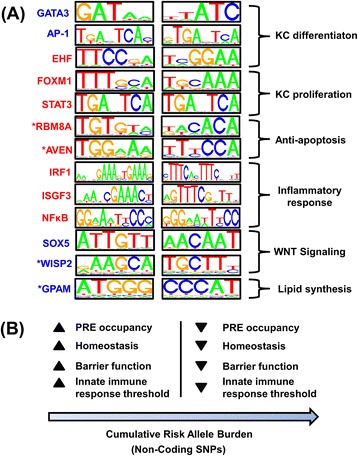Figure 8.

Summary of differentially expressed TFs/uDBPs interacting with PREs and proposed model linking cumulative risk allele burden to PRE occupancy. (A) Selected TFs and uDBPs that are differentially expressed in psoriasis lesions and interact with PREs (red font: PP-increased DEGs; blue font: PP-decreased DEGs; asterisks: uDBPs). Sequence logos depict DNA-binding affinities (both 5′-3′ orientations are shown). (B) Proposed model linking cumulative risk allele burden at non-coding SNPs to PRE occupancy and disease susceptibility. Risk alleles at disease-associated SNPs favor decreased PRE occupancy, thereby disrupting interactions between PREs and trans-acting factors (e.g., AP-1). This increases susceptibility by compromising epidermal homeostasis and barrier function, thus lowering the trigger threshold for innate immune responses to facilitate immune cell infiltration and lesion development.
